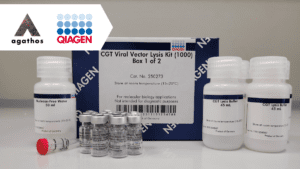
The BioHealth Capital Region, Epicenter of U.S. Regulatory Infrastructure
As one of the world’s top bio hubs, the BioHealth Capital Region (BHCR) is rife with life science assets.
The region has been at the forefront of the SARS-CoV-2 vaccine race, and it is rapidly becoming a center for advanced manufacturing. The BHCR cell and gene therapy ecosystem is thriving, and the area boasts one of the richest and most diverse tapestries of life science talent and workforce development programming. What’s more, Maryland, Washington, DC, and Virginia are home to several dynamic university systems that keep the talent and tech transfer pipeline humming and full.
That said, one major BHCR asset tends to fly under the radar, yet just might be the source from which all else flows—the region’s expansive regulatory ecosystem.
The BHCR is home to a wide array of government and private sector regulatory organizations, including but not limited to the National Institutes of Health (NIH), the National Institute of Standards and Technology (NIST), the U.S. Food and Drug Administration (FDA), U.S. Health and Human Services’ Biomedical Advanced Research and Development Authority (BARDA), and private-sector regulatory stalwarts like United States Pharmacopeia (USP).
These critical regulatory bodies, and the non-dilutive funding some can provide to promising companies, have acted as a magnet, drawing (and keeping) scores of entrepreneurs, international companies, established biopharma organizations, and emerging life science entities to the region.
Indeed, COVID-19 has temporarily disrupted the value of proximity, as companies in all sectors were forced to transition to nearly 100% remote work environments. However, as more vaccinations get into arms and the pandemic recedes, the intrinsic value of proximity and access will recover. That’s not to say the 9 to 5 in the office, road warriors of the I-270 corridor will return full force; remote work is here to stay. But the importance of face-to-face interactions and connecting in person at lunch or via conferences will eventually return. That is to say that the BHCR’s robust regulatory ecosystem will continue to be a significant biopharma industry asset even in the COVID-19 new normal.
Despite the pandemic, the last calendar year has been truly remarkable for the region. The BHCR received an influx of nearly $7B in funding for vaccine development in just nine months in 2020; a new Maryland-located Pandemic and Bioterrorism Center is in the works; the region recently passed San Francisco in NIH funding with Johns Hopkins University as the #1 NIH funded university for the 41st straight year; despite the move to virtual operations, companies continue to hire at a breakneck pace; and entrepreneurs, startups, and international biopharma companies continue to plant new roots in the region.
This is, in part, because of proximity and access to globally-known, regional assets like the NIH, FDA, NIST, and now BARDA. But there are other regulatory elements at play within the region that make starting a company or adding a location in the BHCR an attractive option. Unlike the federal regulatory agencies that have been front and center since March of 2020, some segments of the BHCR’s regulatory footprint have flown under the radar, like United States Pharmacopeia or USP.
USP is a 200-year-old, independent, scientific nonprofit organization focused on building trust in the supply of safe, quality medicines. USP, according to its website, “…is working to strengthen the global supply chain so that the medicines people rely on for health are available when needed and work as expected.”
USP is headquartered in the heart of the BHCR in Rockville, Maryland. USP has approximately 1,200 employees across its locations, generates about $340M in revenue annually, and is a leader in the scientific research and development services industry. The company has been a critical player in the region for years yet has kept a low profile, though its recent activity during the pandemic is raising USP’s brand awareness.
As part of its ongoing response to the pandemic, USP developed a COVID-19 Vaccine Handling Toolkit. The toolkit was part of USP’s effort to engage stakeholders and experts to help increase COVID-19 vaccinations by identifying and addressing operational efficiency gaps across U.S. states and territories. The COVID-19 Vaccine Handling Toolkit was developed by over 30 independent expert volunteers, led by USP’s Healthcare Safety and Quality Expert Committee with representation from several other expert committees, including U.S. government representatives from the Centers for Disease Control and Prevention (CDC), and the FDA. The toolkit’s development was informed by USP’s public quality standards for compounding, microbiology, containers, distribution, stability, and storage.
USP also continues to be a strong collaborator with BHCR companies seeking to navigate the regulatory gauntlet.
The company recently announced a new partnership with Virginia’s Phlow Corp. to develop a new laboratory that will certify and validate Pharmaceutical Continuous Manufacturing processes resulting in affordable, high-quality, U.S.-manufactured essential medicines. Phlow Corp. received an $818.8M contract from the U.S. Department of Health and Human Services (DHHS), according to USA Today, which will help it deliver approximately 1.6M doses of several generic medicines used to fight COVID-19.
The BHCR regulatory ecosystem is unprecedented in-depth and breadth, particularly in the government sector. And with successful regulatory-focused public-sector organizations like USP, the International Society for Pharmaceutical Engineering (ISPE), ThermoFisher Scientific, Lonza, and others with regional locations, the BHCR regulatory ecosystem will continue to be a major draw for great life science companies and top-of-the-line talent.
Momentum is building within the BHCR. The region is quickly becoming a nexus for forces that are converging to transform the global biopharma industry. Whether it’s proximity and access to regulatory organizations, the global fight against current and future infectious diseases, leveraging Big Data, artificial intelligence, and machine learning to create new and better therapeutics, expanding telemedicine’s impact, or developing and refining the advanced biomanufacturing processes needed to deliver more cell and gene therapies, more affordably, the BHCR will drive the impending life science revolution.
- About the Author
- Latest Posts
Steve brings nearly twenty years of experience in marketing and content creation to the WorkForce Genetics team. He loves writing engaging content and working with partners, companies, and individuals to share their unique stories and showcase their work. Steve holds a BA in English from Providence College and an MA in American Literature from Montclair State University. He lives in Frederick, Maryland with his wife, two sons, and the family dog.





